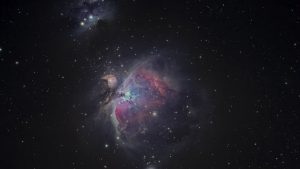NASA’s James Webb Telescope Detects Signs of Water on Distant ‘WASP-96 b’ Planet
NASA’s James Webb Space Telescope (JWST) detected signs of water and evidence of clouds and haze, in the atmosphere of WASP-96 b, located roughly 1,150 light-years away in the southern-sky constellation Phoenix, and one of more than 5,000 confirmed exoplanets in the Milky Way. The most detailed observation of its kind to date, it demonstrates Webb’s unprecedented abil…

NASA’s James Webb Space Telescope has detected signs of water, along with evidence for clouds and haze, in the atmosphere of a hot, puffy gas giant planet orbiting a Sun-like star over a thousand light years away, the US space agency said on Wednesday.
The observation is the most detailed of its kind to date, demonstrating Webb’s unprecedented ability to analyse distant atmospheres, according to NASA. WASP-96 b is one of more than 5,000 confirmed exoplanets in the Milky Way.
Located roughly 1,150 light-years away in the southern-sky constellation Phoenix, it represents a type of gas giant that has no direct analogue in our solar system, it said in a statement.
With a mass less than half that of Jupiter and a diameter 1.2 times greater, WASP-96 b is much puffier than any planet orbiting our Sun. With a temperature greater than 538 degrees Celsius, it is significantly hotter.
WASP-96 b orbits extremely close to its Sun-like star, just one-ninth of the distance between Mercury and the Sun, completing one circuit every three-and-a-half Earth-days, according to NASA.
The combination of large size, short orbital period, puffy atmosphere, and lack of contaminating light from objects nearby in the sky makes WASP-96 b an ideal target for atmospheric observations.
While the Hubble Space Telescope has analysed numerous exoplanet atmospheres over the past two decades, capturing the first clear detection of water in 2013, Webb’s immediate and more detailed observation marks a giant leap forward in the quest to characterise potentially habitable planets beyond Earth.
On June 21, Webb’s Near-Infrared Imager and Slitless Spectrograph (NIRISS) measured light from the WASP-96 system for 6.4 hours as the planet moved across the star.
This resulted in a light curve showing the overall dimming of starlight during the transit, and a transmission spectrum revealing the brightness change of individual wavelengths of infrared light between 0.6 and 2.8 microns.
The light curve confirmed properties of the planet that had already been determined from other observations – the existence, size, and orbit of the planet.
The transmission spectrum revealed the previously hidden details of the atmosphere: the unambiguous signature of water, indications of haze, and evidence of clouds that were thought not to exist based on prior observations.
A transmission spectrum is made by comparing starlight filtered through a planet’s atmosphere as it moves across the star to the unfiltered starlight detected when the planet is beside the star.
Researchers are able to detect and measure the abundances of key gases in a planet’s atmosphere based on the absorption pattern – the locations and heights of peaks on the graph.
In the same way that people have distinctive fingerprints and DNA sequences, atoms and molecules have characteristic patterns of wavelengths that they absorb.
The spectrum of WASP-96 b is not only the most detailed near-infrared transmission spectrum of an exoplanet atmosphere captured to date, but it also covers a remarkably wide range of wavelengths, including visible red light and a portion of the spectrum that has not previously been accessible from other telescopes, NASA said.
This part of the spectrum is particularly sensitive to water as well as other key molecules like oxygen, methane, and carbon dioxide.
Researchers will be able to use the spectrum to measure the amount of water vapour in the atmosphere, constrain the abundance of various elements like carbon and oxygen, and estimate the temperature of the atmosphere with depth.
They can then use this information to make inferences about the overall make-up of the planet, as well as how, when, and where it formed.



